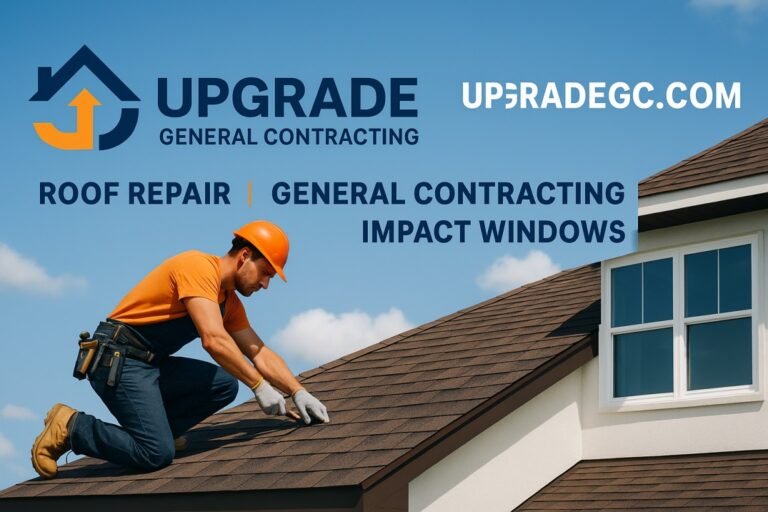A villa’s roof is one of its most important parts. It protects your home from heat, rain, and storms while also giving it a beautiful appearance. Installing roof tiles is not just about placing them on top of the roof; it requires skill, experience, and careful planning.
Many homeowners in the UAE invest in villas with elegant tiled roofs, but not every roof tile installation is done with high quality. Understanding which factors affect the quality of villa roof tiles installation can help you make the right choices and ensure a long-lasting, attractive roof.
In this blog, we will go through the key factors that influence the quality of your villa roof tiles installation and explain why each one matters.
1. Quality of Roof Tiles
The first factor affecting installation quality is the roof tiles themselves. Not all tiles are created equal.
Tile Material
- Clay tiles: Durable, heat-resistant, and ideal for UAE’s hot climate.
- Concrete tiles: Strong and cost-effective but heavier than clay tiles.
- Slate tiles: Elegant and long-lasting, but require precise installation.
Tile Quality
High-quality tiles are uniform in size and thickness. Low-quality tiles may have cracks or uneven shapes, making them difficult to install properly. Professionals always recommend using certified, high-grade tiles for villa roofs.
Note: Planning a new roof for your villa? Trust Artfix Technical Services LLC for professional and reliable villa roof tiles installation in UAE. Our certified experts ensure precise installation, durable results, and a beautiful finish that enhances your home’s value. Contact us today to schedule a consultation and experience expert craftsmanship!
2. Roof Structure and Design
A strong roof structure is crucial for a successful tile installation.
Roof Slope
The slope of your villa roof affects water drainage. Tiles must be installed at the correct angle:
- Too steep: Tiles may slip if not fixed properly.
- Too flat: Water may accumulate, leading to leaks.
Roof Strength
Heavy tiles like clay and concrete need a sturdy structure. Roof beams and supports must be strong enough to carry the weight without sagging or damage.
3. Quality of Installation Team
The skill and experience of the installation team play a huge role in the roof’s quality.
Trained Professionals
Certified and trained roof tile installers understand the right techniques for fixing tiles, cutting them to fit edges, and securing them against strong winds.
Experience in Villa Projects
Villas often have complex roofs with multiple slopes, ridges, and valleys. Experienced installers know how to handle these challenges without compromising on quality.
4. Installation Techniques
Proper installation techniques are vital for a durable roof.
Tile Alignment
Tiles must be placed in straight, even rows. Misaligned tiles look bad and can cause leaks or damage over time.
Proper Fixing
Each tile must be securely nailed, clipped, or adhered to prevent shifting. Loose tiles are dangerous and reduce the roof’s lifespan.
Ridge and Hip Tiles
Ridges and hips (the top edges and sloping corners of the roof) require special attention. Professionals install ridge and hip tiles correctly to prevent water seepage and maintain the roof’s appearance.
5. Underlayment and Waterproofing
Underlayment is the layer between your roof structure and tiles. Its quality and installation affect roof durability.
Purpose of Underlayment
- Prevents water from leaking into the villa.
- Acts as insulation against heat and sound.
- Protects the roof structure from moisture damage.
Proper Installation
Even the best underlayment can fail if installed incorrectly. Professionals ensure:
- No wrinkles or gaps.
- Proper overlap between sheets.
- Correct fastening to prevent movement.
6. Weather Conditions During Installation
The climate can impact the quality of tile installation.
Ideal Conditions
- Dry weather is best for laying tiles.
- Avoid installation during heavy rain or strong winds.
Temperature Considerations
Extreme heat in the UAE can make tiles expand. Experienced installers account for this expansion when spacing and fixing tiles.
7. Ventilation and Roof Design
Proper ventilation improves roof longevity and reduces maintenance.
Importance of Ventilation
- Prevents heat buildup under the tiles.
- Reduces moisture and prevents mold.
- Keeps tiles from warping due to temperature changes.
Ventilation Techniques
Installers may use ventilation tiles, ridge vents, or gaps to ensure air flows properly through the roof.
8. Use of Proper Tools and Equipment
High-quality tools and equipment are essential for professional installation.
Tile Cutting Tools
- Precise tile cutters prevent cracks or breakage.
- Circular saws or tile nibblers are used for curves and edges.
Safety Equipment
- Harnesses, scaffolding, and helmets protect installers and prevent accidents.
- Proper equipment allows installers to work efficiently and safely.
9. Quality Checks and Supervision
Ongoing checks during installation affect the final roof quality.
Supervision
A supervisor ensures that:
- Tiles are aligned correctly.
- Fastening is secure.
- Underlayment and waterproofing are installed properly.
Final Inspection
After installation, professionals perform a final inspection to check for:
- Loose or cracked tiles.
- Proper ridge and hip installation.
- Overall aesthetic and safety.
10. Maintenance and Aftercare
Even a perfectly installed roof requires proper maintenance to stay in top condition.
Cleaning
- Remove debris like leaves and dust to prevent blockages.
- Avoid harsh chemicals that can damage tiles.
Inspection
- Check for cracks or loose tiles after storms or heavy winds.
- Replace damaged tiles promptly to prevent leaks.
Professional Maintenance
Certified roof tile companies often offer maintenance services, ensuring the roof stays in excellent condition for years.
Common Mistakes That Affect Roof Tile Quality
Understanding what can go wrong helps you make better choices.
Using Low-Quality Tiles
Cheap tiles may crack easily and reduce the roof’s lifespan.
Hiring Untrained Installers
Poorly trained installers may misalign tiles, secure them incorrectly, or damage the roof structure.
Ignoring Underlayment
Skipping underlayment or installing it poorly leads to leaks and insulation problems.
Poor Ventilation
Without proper airflow, heat and moisture can damage tiles and roof structure.
How to Ensure High-Quality Villa Roof Tiles Installation
Here are some tips to get the best results:
Choose Certified Professionals
Look for trained, certified installers with experience in villa projects.
Select High-Quality Tiles
Buy tiles from trusted suppliers to ensure durability and uniformity.
Inspect the Roof Before Installation
Make sure the roof structure is strong, clean, and ready for tiles.
Ask About Warranty and Maintenance
A reliable company should provide a warranty and offer maintenance guidance.
Supervise the Process
Stay involved and ensure all steps are followed according to plan.
Final Thoughts
The quality of villa roof tiles installation depends on many factors, including:
- Tile quality and type
- Roof structure and slope
- Installation team skills
- Proper techniques and tools
- Underlayment, waterproofing, and ventilation
- Weather conditions during installation
- Supervision, quality checks, and maintenance
By understanding these factors, homeowners in the UAE can make informed choices and ensure their villa roofs are strong, durable, and beautiful. Hiring certified professionals and using high-quality materials is the best way to achieve long-lasting results.
A well-installed tiled roof not only protects your villa but also enhances its aesthetic appeal and value.





